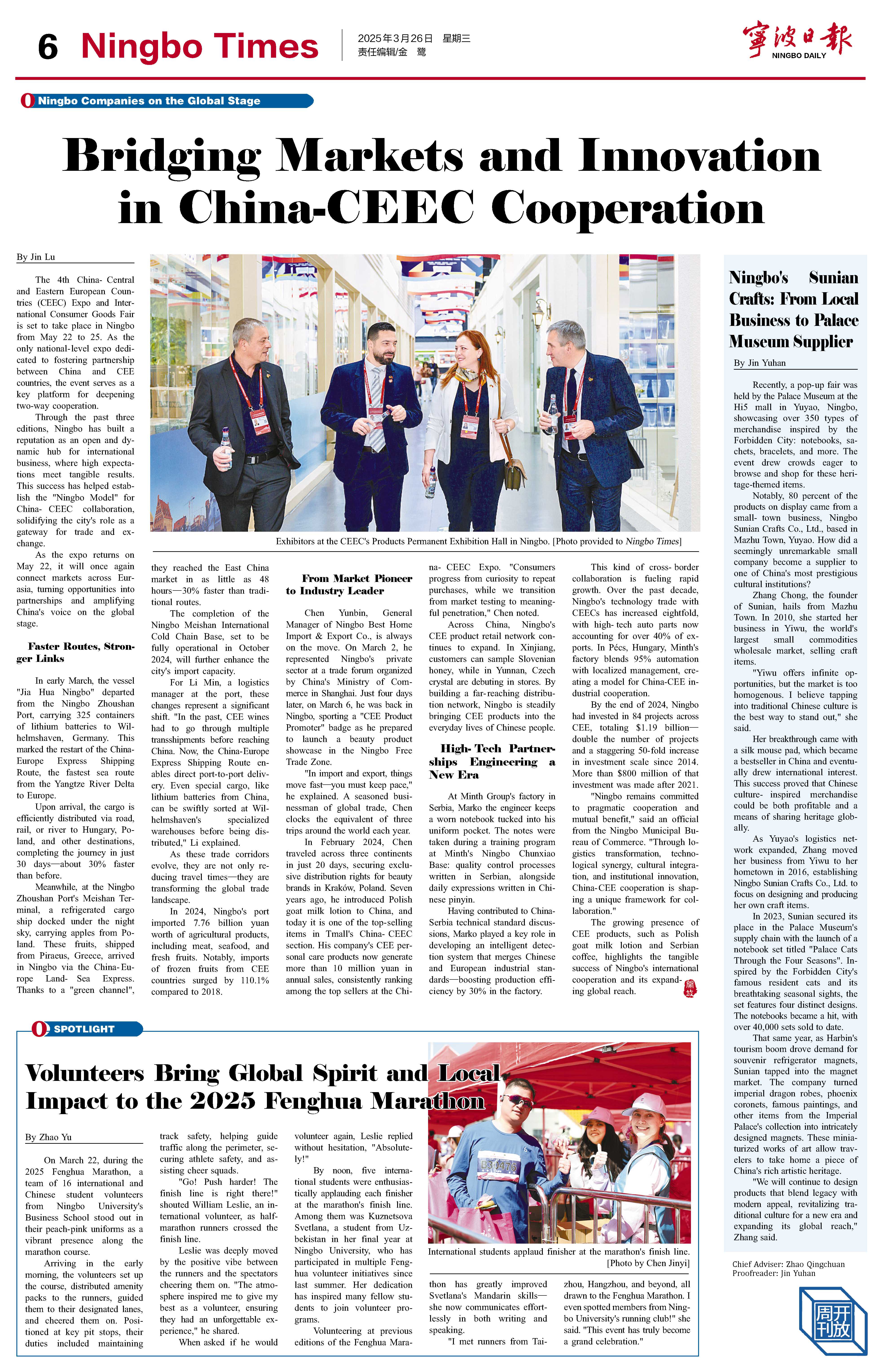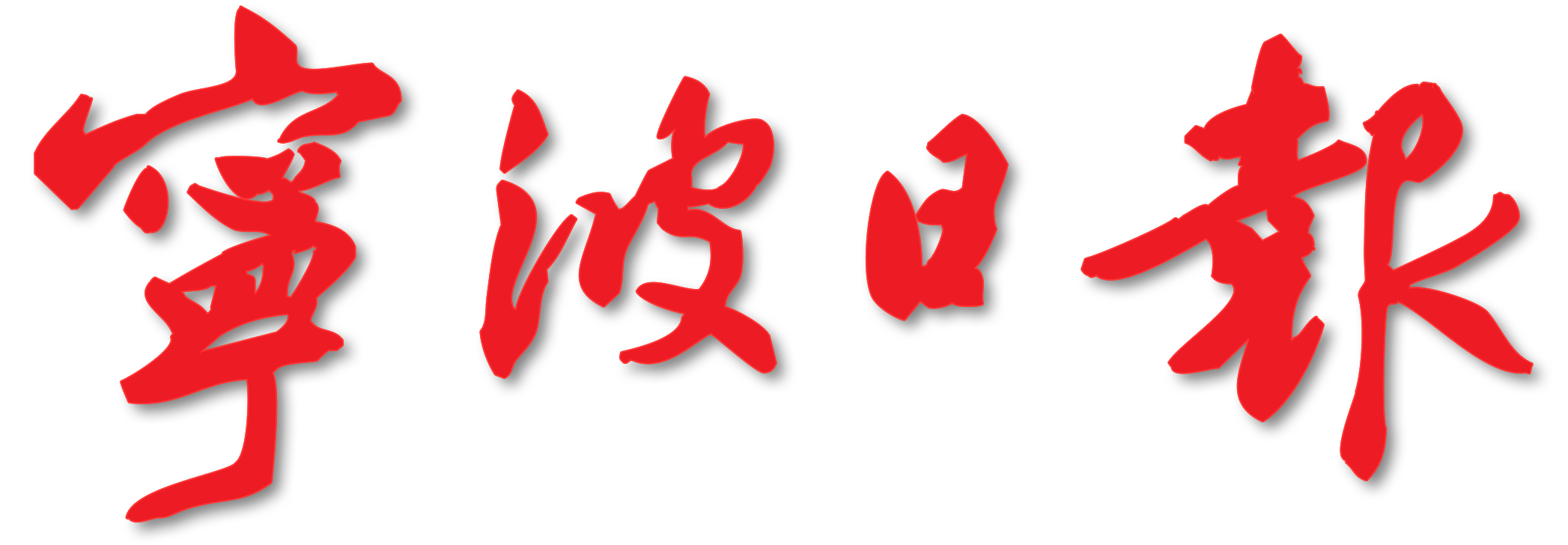By Jin Lu
The 4th China-Central and Eastern European Countries (CEEC) Expo and International Consumer Goods Fair is set to take place in Ningbo from May 22 to 25. As the only national-level expo dedicated to fostering partnership between China and CEE countries, the event serves as a key platform for deepening two-way cooperation.
Through the past three editions, Ningbo has built a reputation as an open and dynamic hub for international business, where high expectations meet tangible results. This success has helped establish the "Ningbo Model" for China-CEEC collaboration, solidifying the city's role as a gateway for trade and exchange.
As the expo returns on May 22, it will once again connect markets across Eurasia, turning opportunities into partnerships and amplifying China's voice on the global stage.
Faster Routes, Stronger Links
In early March, the vessel "Jia Hua Ningbo" departed from the Ningbo Zhoushan Port, carrying 325 containers of lithium batteries to Wilhelmshaven, Germany. This marked the restart of the China-Europe Express Shipping Route, the fastest sea route from the Yangtze River Delta to Europe.
Upon arrival, the cargo is efficiently distributed via road, rail, or river to Hungary, Poland, and other destinations, completing the journey in just 30 days—about 30% faster than before.
Meanwhile, at the Ningbo Zhoushan Port's Meishan Terminal, a refrigerated cargo ship docked under the night sky, carrying apples from Poland. These fruits, shipped from Piraeus, Greece, arrived in Ningbo via the China-Europe Land-Sea Express. Thanks to a "green channel", they reached the East China market in as little as 48 hours—30% faster than traditional routes.
The completion of the Ningbo Meishan International Cold Chain Base, set to be fully operational in October 2024, will further enhance the city's import capacity.
For Li Min, a logistics manager at the port, these changes represent a significant shift. "In the past, CEE wines had to go through multiple transshipments before reaching China. Now, the China-Europe Express Shipping Route enables direct port-to-port delivery. Even special cargo, like lithium batteries from China, can be swiftly sorted at Wilhelmshaven's specialized warehouses before being distributed," Li explained.
As these trade corridors evolve, they are not only reducing travel times—they are transforming the global trade landscape.
In 2024, Ningbo's port imported 7.76 billion yuan worth of agricultural products, including meat, seafood, and fresh fruits. Notably, imports of frozen fruits from CEE countries surged by 110.1% compared to 2018.
From Market Pioneer to Industry Leader
Chen Yunbin, General Manager of Ningbo Best Home Import & Export Co., is always on the move. On March 2, he represented Ningbo's private sector at a trade forum organized by China's Ministry of Commerce in Shanghai. Just four days later, on March 6, he was back in Ningbo, sporting a "CEE Product Promoter" badge as he prepared to launch a beauty product showcase in the Ningbo Free Trade Zone.
"In import and export, things move fast—you must keep pace," he explained. A seasoned businessman of global trade, Chen clocks the equivalent of three trips around the world each year.
In February 2024, Chen traveled across three continents in just 20 days, securing exclusive distribution rights for beauty brands in Kraków, Poland. Seven years ago, he introduced Polish goat milk lotion to China, and today it is one of the top-selling items in Tmall's China-CEEC section. His company's CEE personal care products now generate more than 10 million yuan in annual sales, consistently ranking among the top sellers at the China-CEEC Expo. "Consumers progress from curiosity to repeat purchases, while we transition from market testing to meaningful penetration," Chen noted.
Across China, Ningbo's CEE product retail network continues to expand. In Xinjiang, customers can sample Slovenian honey, while in Yunnan, Czech crystal are debuting in stores. By building a far-reaching distribution network, Ningbo is steadily bringing CEE products into the everyday lives of Chinese people.
High-Tech Partnerships Engineering a New Era
At Minth Group's factory in Serbia, Marko the engineer keeps a worn notebook tucked into his uniform pocket. The notes were taken during a training program at Minth's Ningbo Chunxiao Base: quality control processes written in Serbian, alongside daily expressions written in Chinese pinyin.
Having contributed to China-Serbia technical standard discussions, Marko played a key role in developing an intelligent detection system that merges Chinese and European industrial standards—boosting production efficiency by 30% in the factory.
This kind of cross-border collaboration is fueling rapid growth. Over the past decade, Ningbo's technology trade with CEECs has increased eightfold, with high-tech auto parts now accounting for over 40% of exports. In Pécs, Hungary, Minth's factory blends 95% automation with localized management, creating a model for China-CEE industrial cooperation.
By the end of 2024, Ningbo had invested in 84 projects across CEE, totaling $1.19 billion—double the number of projects and a staggering 50-fold increase in investment scale since 2014. More than $800 million of that investment was made after 2021.
"Ningbo remains committed to pragmatic cooperation and mutual benefit," said an official from the Ningbo Municipal Bureau of Commerce. "Through logistics transformation, technological synergy, cultural integration, and institutional innovation, China-CEE cooperation is shaping a unique framework for collaboration."
The growing presence of CEE products, such as Polish goat milk lotion and Serbian coffee, highlights the tangible success of Ningbo's international cooperation and its expanding global reach.



